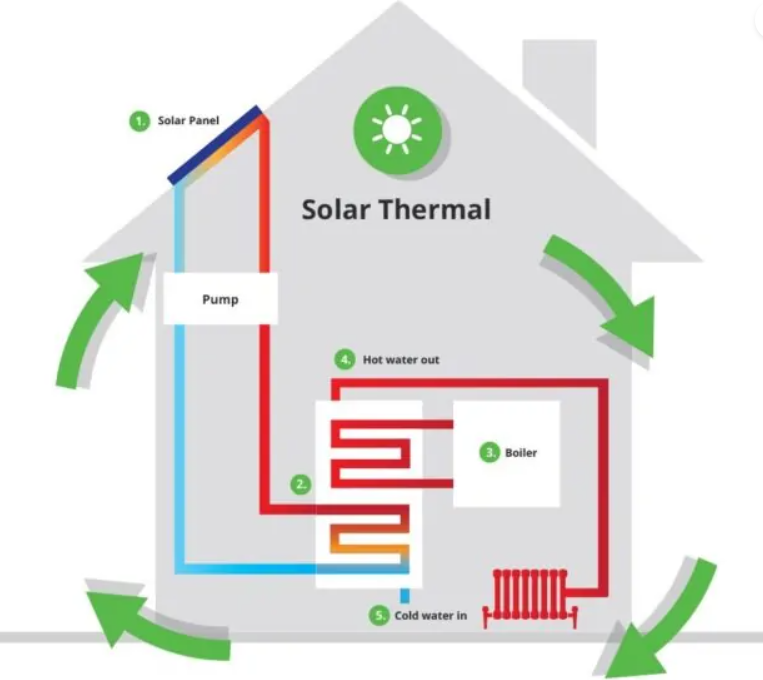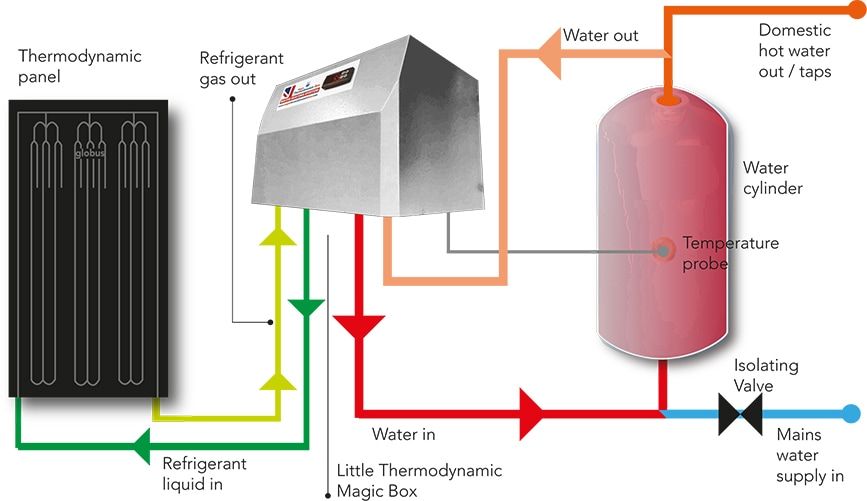Thermal Solar Systems
Experience the Future of Sustainable Energy with State-of-the-Art Thermal Solar Systems
Cut energy bills
Thermal solar systems can help you reduce your energy bills by up to 60%
Higher efficiency
Thermal solar systems can provide hot water on demand
Increase home value
Homes with solar panels sell for more than homes without solar panels
HARNESS THE SUN TO HEAT HOT WATER FOR YOUR DAILY NEEDS
Solar Thermal Panels for Sustainable Energy
Experience the power of thermal solar panels with Heats On! Our expert team of qualified solar installers is passionate about helping you save money and reduce your carbon footprint. With our top-quality panels, you can harness the sun's energy to heat water for all your daily needs, from refreshing showers to sparkling clean dishes. Get ready to embrace a greener and more sustainable future with thermal solar panels.
Understanding Thermal Solar Water Heater Systems
Solar thermal panels, also known as solar water heating or solar hot water systems, are innovative devices that utilise the sun's radiation to heat water. Unlike solar photovoltaic (PV) panels that convert sunlight into electricity, solar thermal panels capture the sun's heat directly and transfer it to water or a heat-transfer fluid. This simple yet effective technology has been embraced by environmentally-conscious homeowners seeking sustainable alternatives.
How Solar Thermal Systems Work
To grasp the mechanics behind solar thermal systems, it's important to understand the key components:
Solar Collectors
Roof-mounted panels with pipes carrying water or heat-transfer fluid.
Heat Transfer Fluid
A fluid circulates through solar collectors, absorbing and transferring the sun's heat to the water in the storage tank.
Storage Tank
The heated water or transfer fluid is stored in an insulated tank, ready for use whenever you need it.
Backup System
Solar thermal panels work with conventional water heating systems, such as boilers or immersion heaters, as backups during low sunlight periods.
The Benefits of Solar Thermal Panels
Reduced Energy Costs
By harnessing the sun's energy, solar thermal panels significantly reduce your reliance on traditional energy sources for heating water. This translates into substantial cost savings on your energy bills over the long term.
Environmentally Friendly
Solar thermal panels are a clean and renewable energy solution. By choosing this eco-conscious option, you contribute to reducing greenhouse gas emissions and mitigating climate change.
Independence from Fossil Fuels
Installing solar thermal panels allows you to generate electricity and break free from the volatility of fossil fuel prices. As the sun's energy is abundant and free, you are shielded from fluctuations in fuel costs.
Government Incentives
There are government schemes and incentives that promote the adoption of renewable energy technologies. These incentives can help offset the initial installation costs, making solar thermal panels even more appealing.
Is Your Home Suitable for Solar Thermal Panels?
Solar thermal panels can be installed on a wide range of properties, but there are a few key factors to consider:
- Roof Orientation: South-facing roofs are perfect for solar thermal panel installation, receiving maximum sunlight. East and west-facing roofs work too, but with slightly reduced efficiency.
- Roof Pitch and Shading: Roof pitch affects solar thermal panel performance. Optimum efficiency requires a pitch angle of 30-45 degrees. Minimise shading from nearby buildings, trees, or chimneys to maximise sunlight exposure.
- Available Space: Depending on the number of occupants and hot water demands, you will need to ensure that you have adequate space for both the solar collectors and the storage tank.
Are Grants Available for Solar Panels & Battery Storage
There are a number of government grants and schemes available for solar panels and battery storage in Scotland. Some of these schemes include:
- Home Energy Scotland Grant and Loan
- Warmer Homes Scotland
- Private Rented Sector Landlord Loan
- Energy Saving Trust
- Scottish Power Energy Trust
Explore government grants and schemes like Home Energy Scotland Grant and Loan, Warmer Homes Scotland, and more. Contact Heats On for expert advice today.
Updated June 2023
POWERING UP YOUR RENEWABLE ENERGY
How We Work & Installation Process
When you decide to embrace the benefits of solar thermal panels, our solar panel installation process typically involves the following easy steps
Step 1: Consultation & Assessment
Schedule a consultation with our experts. We will assess your property for solar thermal panels based on roof orientation, pitch, shading, space, and hot water requirements.
Step 2: System Design & Quotation
Tailored to your property, we'll design a custom solar thermal system, determining collector size, storage tank, and integration with your heating setup along with a detailed quotation with costs, savings, and payback period.
Step 3: Installation & Testing
After design approval, our skilled installers mount collectors securely, connect heat-transfer pipes, and position the storage tank.. We guarantee seamless installation and conduct tests for performance and safety.
Step 4: Monitoring & Maintenance
After installation, we offer monitoring services to track your solar system's performance. This allows us to promptly identify issues and ensure optimal efficiency. For maintenance or repairs, our team of technicians is always available to assist you.
Start Your Renewable Energy Journey with Heats On
Your information is safe with us. We will only use your email address to contact you regarding your enquiry
Popular Questions
Got a question? We’re here to help.







